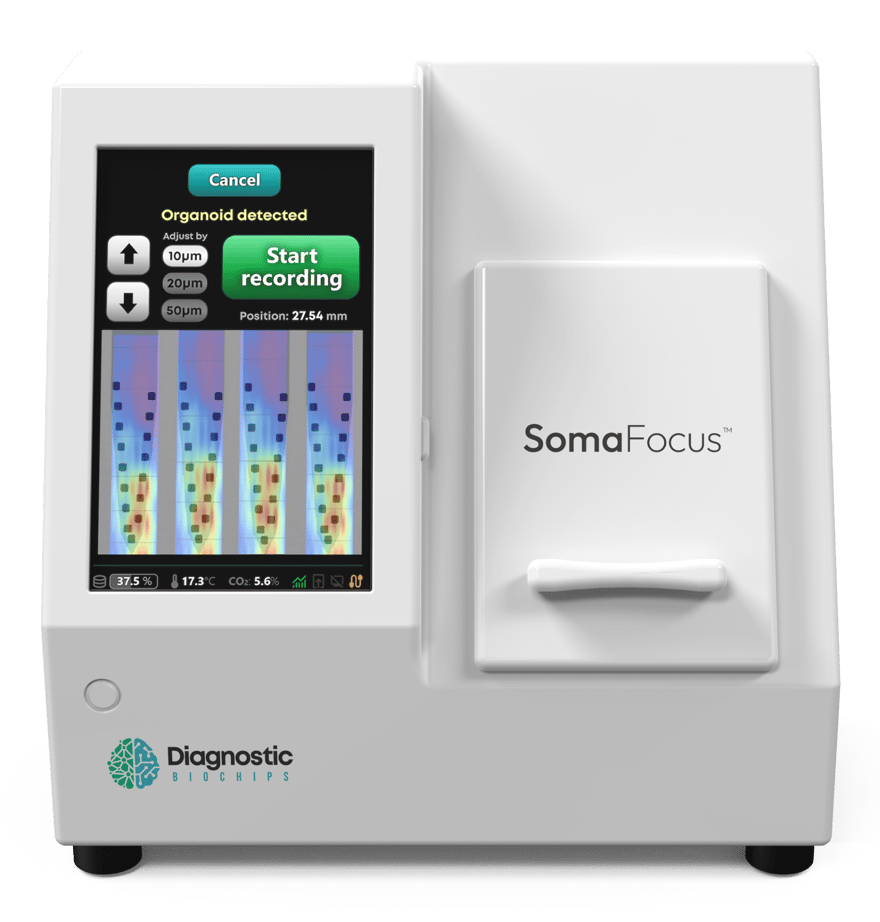The SomaFocus™ Technology

Complement Imaging and Sequencing
Achieve Single-unit Resolution with Superior SNR
Automated, Plug-and-Play Workflow
Automated Data Acquisition
The SomaFocus platform combines semiconductor-grade sensing with automated data capture and streamlined analysis. Every experiment is processed as it runs, transforming complex electrophysiology signals into clear insights.
Perform live processing of incoming data to reveal key metrics during each experiment. Visualize and interact with multiple data streams simultaneously, including:
- Spike detection and burst identification
- Local Field Potentials (LFPs) and synchrony detection
- Raw vs. filtered signal overlays
- Spike raster plots for population-level activity
All visualizations update continuously as recordings unfold, providing an immediate understanding of organoid network function.
Publication Ready Exports and Cloud-based Data Storage
Each recording session automatically generates organized output files, ready for downstream analysis in external toolchains such as Kilosort or custom pipelines. Secure cloud storage, enabling cross-site studies and team-based analysis.
Probe Shank Displays
Explore a powerful visual interface for interpreting spatial patterns of activity across each probe shank. Translate complex multi-channel data into intuitive heatmaps that reveal how signals evolve in space and time.
